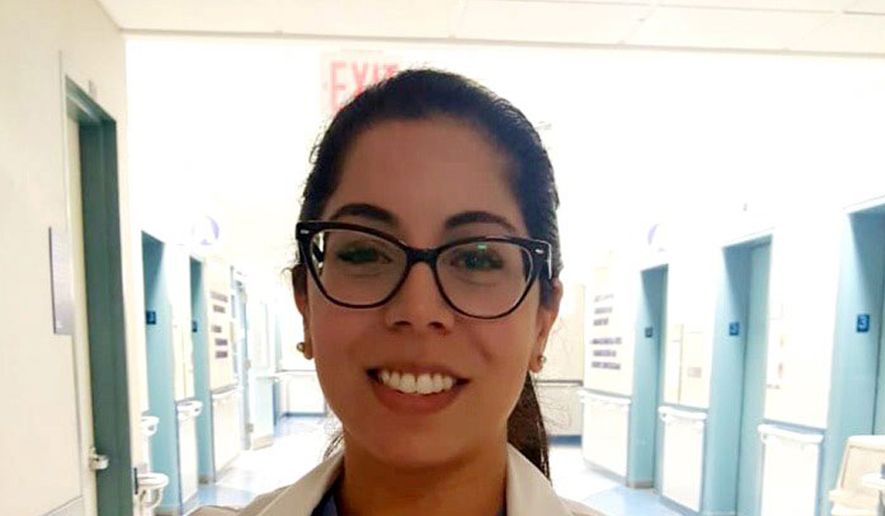Sonika Randev was familiar with the sensation of being short of breath because of her exercise-induced asthma, but the New York City physician knew there was something different about the symptom she felt last month.
A tickle in her throat erupted into a fever of more than 100 degrees, chills, body aches and a dry cough — signs of infection from the new coronavirus.
On March 23, five days after she was tested, she received a phone call with news of a positive COVID-19 diagnosis.
“The rate of people getting infected and actually the numbers of people testing positive, it literally seems like it’s everyone,” said Dr. Randev, who has recovered from the respiratory illness. “We are one. This virus does not discriminate.”
The vast majority of people infected by the coronavirus, like Dr. Randev, recover after a few days or a couple of weeks, and their symptoms, usually a cough and fever, are only mild or moderate.
In some cases, though, the coronavirus can bring harsher symptoms, pneumonia and death. Older people and those with underlying health problems are more likely to suffer.
Dr. Randev, a 35-year-old hospital resident prone to respiratory infections, went to work as usual on March 16. The next day, she decided to stay home as her symptoms began.
During her weeks of recovery, her hospital department was converted into a medical ward as other units became swamped by cases of COVID-19, the disease caused by the new coronavirus.
Outpatient clinics shut down and elective surgeries were canceled as New York hospitals geared up to respond to the fast-spreading virus.
Dr. Randev said Sunday that she has almost fully recovered and plans to return to work Monday. She will be filling in for other hospital employees who have fallen ill or may become sick.
“In the next few weeks, there’s going to be a surge in the number of cases that are going to be coming to the hospital,” she said. “We haven’t even reached the peak of the bell curve yet. … Things are going to blow up.”
She heard talk that her hospital department could be transformed into a ventilator unit.
“We’re getting ready. We’re literally preparing for war,” Dr. Randev said.
Unlike Dr. Randev, New York City resident David Markovich was not exhibiting the common symptoms — fever, cough and shortness of breath — but still tested positive last month for infection from the coronavirus.
The 31-year-old said he didn’t have any health problems but was experiencing body aches and extreme fatigue and was feeling “a bit strange.”
Mr. Markovich was tested at an urgent care clinic on March 20. The doctor ruled out the flu before swabbing Mr. Randev’s nose. About a week later, Mr. Markovich learned he tested positive for COVID-19.
“It doesn’t bother me,” he said of his diagnosis. “I live in the center of New York City, so I kind of figured I would get it. I was just around so many people.”
He said he has been isolating himself at home for days, sleeping more than usual and trying to work remotely as much as he can.
Mr. Markovich, who runs an online platform for people in the marketing business, created the CoronaHub website (coronahub.co) for those trying to find work, connect with others and receive support as the pandemic unfolds.
The scene in New York, typically a bustling, restless city, is empty, Mr. Markovich said.
“There’s really no one out, and even surprisingly almost no homeless people out, either. Mostly everything is closed. It’s like living in a movie because the whole city’s shut down,” he said.
New York state, with more than 20 million people, is the current epicenter of the coronavirus outbreak in the U.S. It has recorded more than 122,031 cases and more than 4,100 deaths. More than 12,000 people are in recovery.
Gov. Andrew Cuomo issued an order last month for all residents to stay home.
Some states, including Utah, Wyoming and North Dakota, have not mandated statewide stay-at-home orders.
“I think right now until the dust settles every state should go on lockdown. As someone who has gotten the virus and knows how tough it is to recover, we should take this very seriously,” Mr. Markovich said. “People might survive, like me, but those not practicing social distancing are putting vulnerable people at risk.”
Meanwhile, Dr. Randev said hospital employees have been rotating work shifts to avoid burnout.
She was the first in her department to test positive for coronavirus, but she is certainly not the last. The shortage of medical equipment such as respirators, face masks and ventilators is creating more stress for hospital workers as they try to care for patients.
Dr. Randev said she is a bit scared to return to work because of the toll on hospital workers’ mental health, but she also feels empowered because she now has possible immunity to the virus.
“I believe everything happens for a reason. For me to get sick so early on, I think for me to be building immunity and having antibodies against this virus, it’s going to be a huge benefit because now I can jump in,” she said.
“Even though right now, beds are filling up, it’s still not the worst that we’ve seen,” Dr. Randev said. “Saving lives is what we signed up for. That’s the oath that we took.
“I don’t think that I’ll ever have this sort of situation where I was actually infected with the virus and I was able to actually help humanity get through this in some way or another,” she said. “Careerwise, it’s life altering. It makes me proud, it makes me happy that I am able to serve my country and my community in a way that I never thought that I was able to do.”
• Shen Wu Tan can be reached at stan@washingtontimes.com.




Please read our comment policy before commenting.